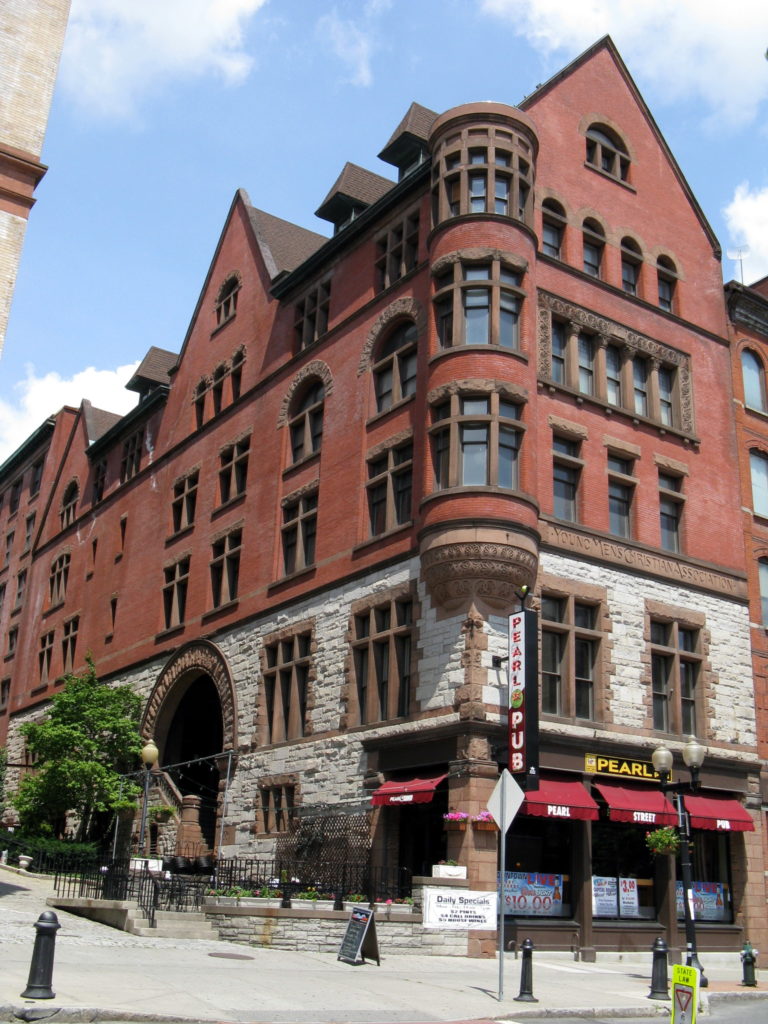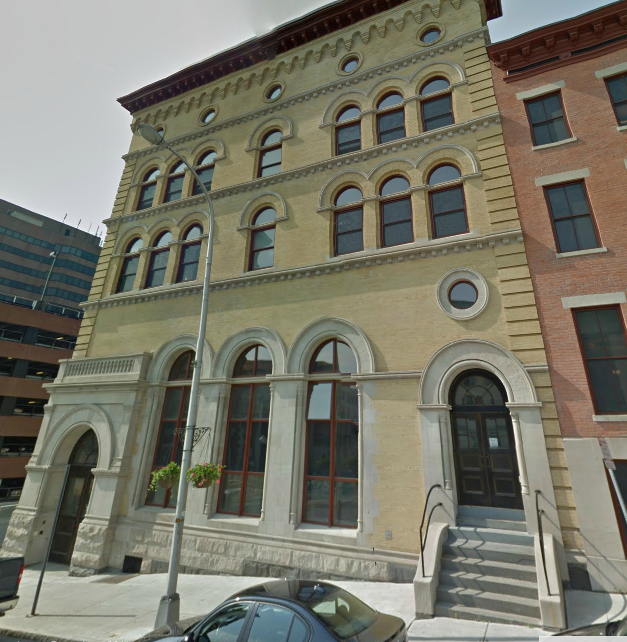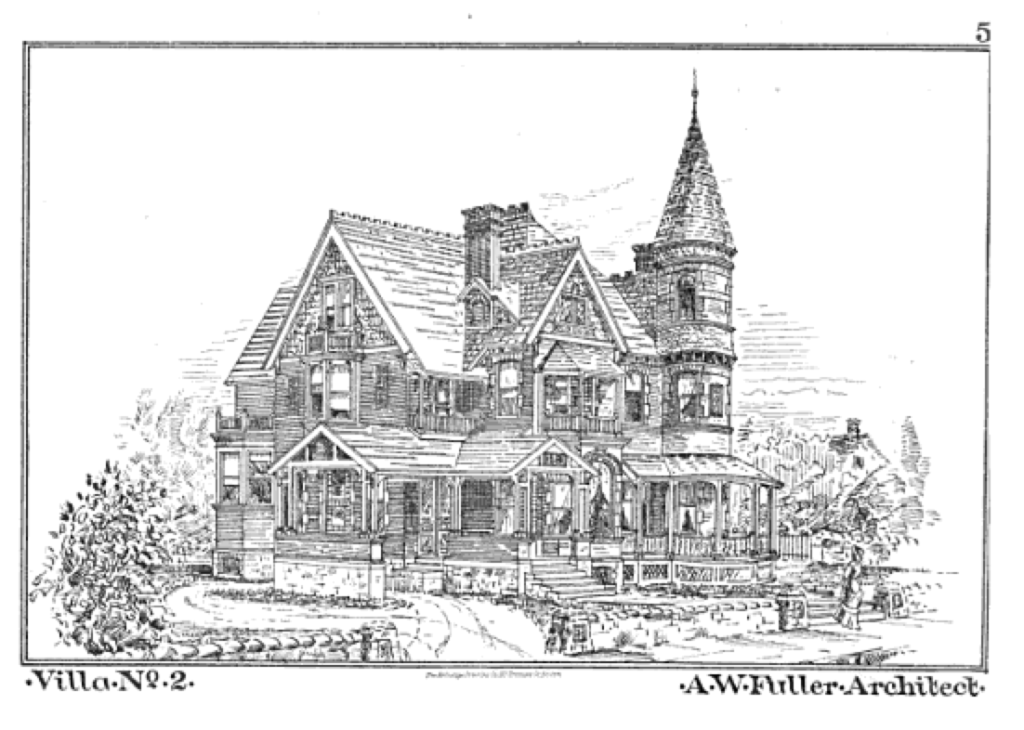When talking about Albany’s leading architects, it never seems like Albert W. Fuller gets his due, and yet he had a huge influence on the look of Albany through the years, and had commissions and influence across a wider geographic range than many of the others.
Fuller was born in 1854 in Clinton, New York. He came to Albany and trained as a draftsman in the offices of Ogden & Wright, where he worked from 1873 to 1879. He opened his own office; his early commissions included the Albany County Bank Building at 6 South Pearl (1882, demolished 1927) and the Van Slyke House (1881, 756 Madison Ave.).

In 1883 Fuller entered partnership with William A. Wheeler, an Albany native who had studied in Boston. They worked together through 1897, and right from the start they had commissions well beyond Albany – the Henry C. Pierce House in St. Louis, the Academy of Music in Newburgh, the Methodist Episcopal Church in Hoosick Falls, and other buildings in Plattsburgh, Denver and more. Closer to home, they built some of the Capital District’s greatest structures: Albany’s YMCA Building (1887, 62 N. Pearl St.), the Gardner Earl Memorial Chapel and Crematorium (1888, Oakwood Cemetery, Troy), the Soldiers and Sailors Monument (1891, Troy), and the Masonic Temple (1895, 67 Corning Place). They also built some of our most fondly remembered losses: Harmanus Bleecker Hall (1888, 161 Washington Ave.), and the Silliman Memorial (1897, Mohawk and Seneca streets, Cohoes). They made a little mini-industry out of building YMCAs, putting them up in New Britain, CT and Montreal, and a much bigger industry out of building schools. In Albany, they built Public Schools 10, 6, and 24, as well as the Normal Schools in Plattsburgh and Oneonta, an auditorium at the Northfield (MA) Seminary, Silliman Hall at Hamilton College, and Grant Hall (formerly Alpha Delta Phi) at Union College. And there was much, much more. Among the other Albany buildings still standing: McKinney House (1889, 391 State St.), Andrew Baker House (1892, 129 S. Lake Ave.), the Fourth Precinct Police Station (1891, 419 Madison Ave.), Alden Chester House (now the Ronald McDonald House, 1891, 139 S. Lake Ave.), St. Peter’s Episcopal Rectory (1895, 107 State St.). And there were even more. They were a busy 14 years.

Don’t know why Wheeler was out the door, but he was. On his own, Fuller built the beautiful and still standing Centennial Hall (1898-9, 7 Pine St.), and Public Bath No. 1 (1900, 665 Broadway). He also had work in Watervliet, Glens Falls (the City Hall), Warrensburg, and Richmond, VA. From 1900 to 1909, his former draughtsman William B. Pitcher was a partner in the firm, and in that time Fuller designed a few more buildings you may have been around and about, such as P.S. 12 (1901, 27 Western Ave.), the Gibson and Walker houses (1901, 415 and 417 State St.), the James McCredie House (1901, 403 State St.), and the Albany Institute of History and Art (1906, 125 Washington Ave.). This time also saw plenty of out-of-town work, including the libraries in Amsterdam and Johnstown, Trinity Episcopal in Watervliet, the Guy Park Avenue School in Amsterdam, and Hackley Hospital in Muskegon, Michigan.
After Pitcher left, Fuller just kept on going, with even more commissions around the state and beyond, and even more of the buildings we still most strongly associate with Albany: the Berkshire Hotel (1912, 140 State St.), the Kinney & Woodward Building (1916, 74 State Street, now a boutique hotel), Public School 19 (1917, 395 New Scotland Ave.), the Harmanus Bleecker Library (1924, 19 Dove St.), the University Club (1925, 141 Washington Ave.), and Albany Law School (1928, 80 New Scotland Ave.). Fuller died in 1934, still at work.
In 1882, Fuller published a book titled “Artistic Homes in City and Country: A Selection of Sketches Prepared in the Routine of Office-Work and Now Amplified and Enlarged.” In his preface, Fuller wrote:
In offering these to the public, it is my desire to give some practical hints which may be of use to those who wish to make their homes not only comfortable, but artistic, and without involving any greater expenditure. The rapid progress which has been made within the past few years in both the external and internal treatment of our homes very forcibly illustrates the desirability of seeking the services of an architect, rather than endeavoring to have one’s own ideas carried out by those unskilled in the profession. While it is not expected that these designs will meet the requirements of others than those for whom they were planned, still they will form a basis from which sketches can be made suitable to location and the wants of those desiring to build.
The volume includes lovely fantasies of Edwardian homes like this one:

The dates in this were primarily sourced from Diana Waite’s “Architects in Albany,” with additional dates from Wikipedia and other references to Fuller.

Leave a Reply